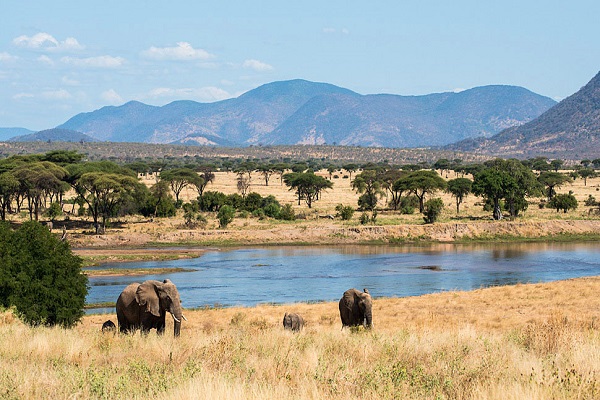Ruaha national park
RUAHA NATIONAL PARK
5 Things to do on a Safari in Ruaha National Park | Tanzania Safaris
Ruaha National Park (Iringa) - All You Need to Know BEFORE You Go
Ruaha National Park | Tanzania | Kizigio | andBeyond
Ruaha National Park | Enclose Africa Safaris.
Ruaha National Park - Afrozone Kingdom Safaris
Roaming between luxury lodges in Tanzania's Ruaha National Park | Luxury Travel Magazine | Luxury Travel Features, News, reviews, interviews, hotels, resorts, luxury fashion, jewellery, supercars and yachts
Ruaha National Park, Tanzania, Africa - Ruaha Safaris by AfriChoice.com!
Ruaha Tanzania Safari
Ruaha National Park Tanzania Luxury Safari - Luxurious Tented Camp
Ruaha National Park in Tanzania
Ruaha National Park in Tanzania is the largest in the whole of the country covering an area of about 13,000 square kilometres.
Ruaha Game park is found in the middle of Tanzania about 130 kilometres from Iringa. The park is part of a more extensive ecosystem, which includes Rungwa Game Reserve, Usangu Game Reserve, and several other protected areas.
The name of the park is derived from the Great Ruaha River, which flows along its South-Eastern margin and is the area of focus for game-viewing. To reach the park you can go by road via Iringa or fly to the airstrip at Msembe, park headquarters.
Ruaha National Park has a bimodal pattern of rain forest; the short rainfall season begins November to February, while the long season is between March and April. The park experiences its dry season between June and October.
The park is one of the Tanzania birds’ paradise with more than 571species and some of them are known to be migrants from within and outside Africa.
Ruaha is believed to have one of the highest concentration of elephants than any National Park in East Africa. It is also a good place to view the magnificent mammals like Kudu, Sable and Roan antelopes can easily be spotted in Miombo woodland. The park is also a habitat for endangered wild dogs. Other animals in the park include lions, leopards, cheetah, giraffes, zebras, elands, impala, bat eared foxes and Jackals.
Apart from large animals, the park also harbors a number of reptiles and amphibians such as crocodiles, poisonous and non-poisonous snakes, monitor lizards, agama lizards and frogs.
The park is characterized by semi-arid type of vegetation, baobab trees, Acacia and other species. There are over 1,650 plant species that have been identified in this park.
GETTING RUAHA NATIONAL PARK
By Air-There are both scheduled and chartered flights into the park mainly from Arusha, Dodoma, Kigoma and Dar-es-salaam. Park’s airstrips are located at Msembe and Jongomero.
By road-It is about 130km drive from Iringa town and 625km from Dar-es-salaam city.
The road into the park is accessible throughout the year
Rift valley
The Great Rift Valley crosses the park. The escarpment wall along the western valley side is about 50-100m high in the north-eastern parts, increasing in height to the southwest. It is considered that, the valley of the Great Ruaha River is an extension of the Great Rift Valley. The Great Ruaha River flows for 160km long along the entire eastern boundary through rugged gorges and open plains.
Natural springs
They occur throughout the park and they are associated with the base of the Western Rift Valley escarpment, most notably Mkwawa, Mwayembe, Makinde and Majimoto springs. These are dry season refugees for wildlife and when most of the rivers get dry.
Undulating landscape
The park has undulating land and hills including kilimamatonge, Nyamasombe, Nyanywa, Chariwindwi, Igawira, Mwayiui, Kibiriti, Magangwe, Ndetamburwa and Isukanvyiola. These act as kopjes creating good habitat for animals such as klipspringer which normally can be seen in some of these hills.
TOURISM ACTIVITIES
Tourism activities in the park include Game viewing, long and short wilderness walking safari, bird watching, picnic, bush meals (break-fast, lunch, dinner) in the untouched bushes.
BEST TIME TO SEE THE WILDLIFE
Best time to see predators and large mammals is during the dry season (mid May-December), The wet season (January –April) is best for bird watching, lush scenery and wildflowers. The male Greater kudu is most visible in June which is their breeding season.





Comments